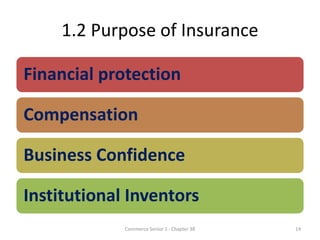Pacific Prime for Beginners
Table of ContentsFascination About Pacific PrimeThe Ultimate Guide To Pacific PrimeNot known Facts About Pacific PrimeNot known Details About Pacific Prime The Single Strategy To Use For Pacific Prime

This is since the information were accumulated for a duration of solid economic performance. Of the estimated 42 million individuals who were without insurance, just about regarding 420,000 (concerning 1 percent) were under 65 years of age, the age at which most Americans come to be eligible for Medicare; 32 million were adults in between ages 18 and 65, around 19 percent of all adults in this age; and 10 million were youngsters under 18 years of age, regarding 13.9 percent of all youngsters (Mills, 2000).
These quotes of the number of individuals uninsured are produced from the annual March Supplement to the Present Population Survey (CPS), conducted by the Census Bureau. Unless otherwise kept in mind, national price quotes of people without medical insurance and proportions of the population with different type of coverage are based on the CPS, one of the most widely utilized resource of quotes of insurance policy coverage and uninsurance rates.
Top Guidelines Of Pacific Prime

Still, the CPS is especially useful because it generates yearly quotes fairly promptly, reporting the previous year's insurance policy coverage approximates each September, and due to the fact that it is the basis for a constant collection of estimates for more than two decades, permitting for analysis of trends in coverage with time. For these factors, along with the comprehensive use the CPS in various other researches of insurance policy coverage that are presented in this record, we rely upon CPS estimates, with constraints kept in mind.

The estimate of the variety of uninsured individuals expands when a population's insurance standing is tracked for a number of years. Over a three-year duration beginning early in 1993, 72 million people, 29 percent of the united state population, lacked insurance coverage for at least one month. Within a single year (1994 ), 53 million individuals experienced a minimum of a month without coverage (Bennefield, 1998a)
6 out of every ten without insurance adults are themselves employed. Working does enhance the possibility that one and one's family participants will have insurance policy, it is not an assurance. Also members of family members with two full time breadwinner have virtually a one-in-ten possibility of being uninsured (9.1 percent without insurance rate) (Hoffman and Pohl, 2000).
Pacific Prime - Questions
New immigrants represent a significant proportion of individuals without health insurance policy. One evaluation has associated a substantial section of the recent growth check here in the dimension of the united state without insurance population to immigrants who showed up in the nation in between 1994 and 1998 (Camarota and Edwards, 2000). Current immigrants (those that came to the United States within the previous 4 years) do have a high price of being uninsured (46 percent), but they and their kids represent simply 6 percent of those without insurance policy across the country (Holahan et al., 2001).
The relationship between health insurance and access to care is well established, as documented later in this chapter. Although the connection between health and wellness insurance coverage and health and wellness results is neither direct nor basic, a comprehensive medical and health services research literature web links wellness insurance policy protection to enhanced access to care, better quality, and boosted individual and populace health and wellness standing.
Levels of analysis for checking out the impacts of uninsurance. It focuses especially on those without any kind of health and wellness insurance coverage for any type of size of time.
Pacific Prime - An Overview
The issues faced by the underinsured remain in some aspects similar to those dealt with by the without insurance, although they are generally much less severe. international health insurance. Uninsurance and underinsurance, nonetheless, include definitely different plan problems, and the techniques for addressing them might vary. Throughout this research and the 5 reports to follow, the main focus gets on individuals without any medical insurance and hence no aid in spending for health and wellness care beyond what is readily available via charity and safeguard establishments
Wellness insurance policy is an effective aspect affecting invoice of treatment since both clients and doctors reply to the out-of-pocket cost of services - https://www.kickstarter.com/profile/pacificpr1me/about. Wellness insurance policy, nonetheless, is neither essential neither enough to get to medical services. Nonetheless, the independent and straight result of medical insurance coverage on accessibility to wellness services is well developed.
Others will certainly acquire the wellness treatment they require even without medical insurance, by paying for it expense or seeking it from service providers that provide treatment cost-free or at highly subsidized prices. For still others, health insurance policy alone does not guarantee invoice of care due to other nonfinancial barriers, such as an absence of healthcare companies in their area, restricted accessibility to transportation, illiteracy, or etymological and social differences.
The Buzz on Pacific Prime
Official research regarding without insurance populaces in the USA dates to the late 1920s and very early 1930s when the Committee on the Cost of Treatment produced a series of reports regarding funding doctor workplace sees and hospitalizations. This problem became significant as the numbers of clinically indigent climbed throughout the Great Clinical depression.